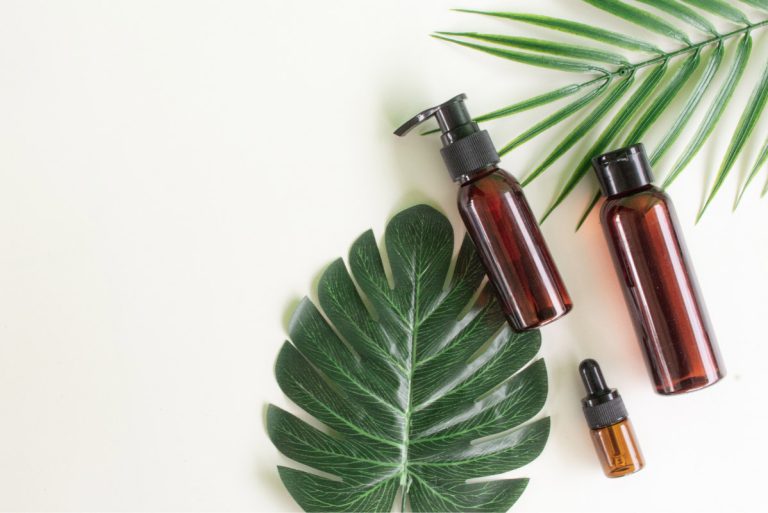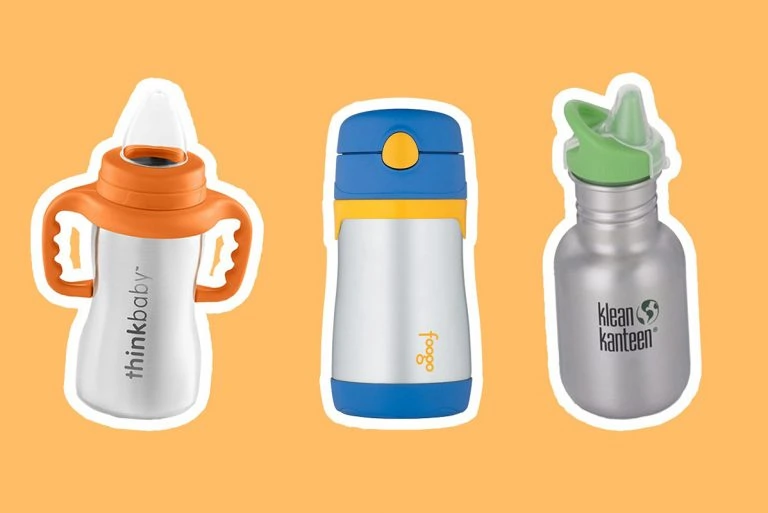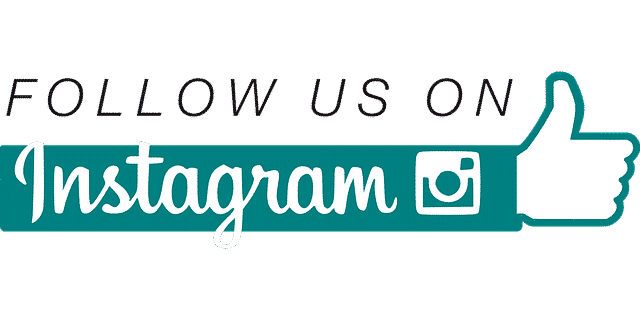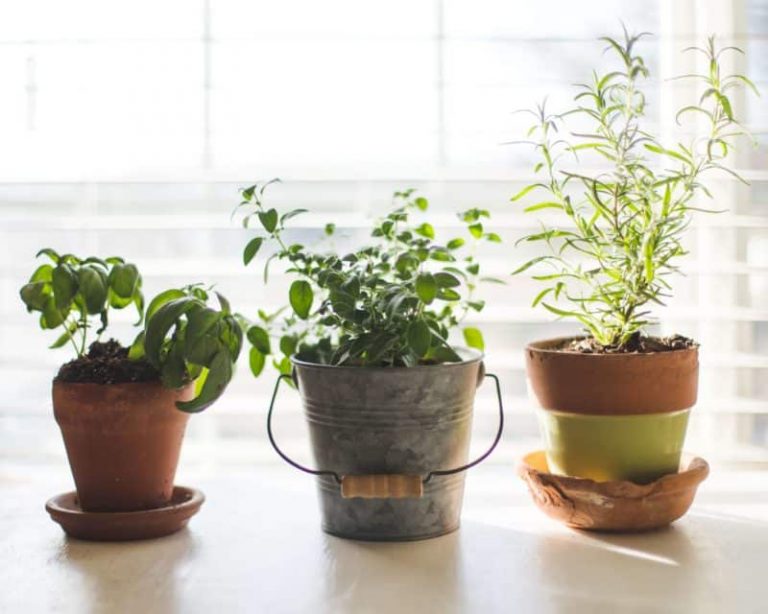The textile industry has a terrible impact on the environment.
Not only does leather production cause animal suffering, but livestock pollution is also a big environmental issue, not to mention the huge amounts of energy and dangerous chemicals required to turn animal hides into leather.
Top sustainable leather alternatives to consider
Using sustainable leather alternatives is a great way to move towards a better future – let’s take a look at some of the leading options.
Cork
Cork is one of the best sustainable alternatives to leather for a number of reasons.
Firstly, it’s a completely natural, easily recyclable product. It is sourced from cork oak trees native to south-west Europe and north-west Africa. Cork oak trees are harvested every nine years and have a lifespan of over 200 years, making cork a highly sustainable material.
Secondly, cork is also a fantastic replacement for leather. Naturally waterproof, highly durable, lightweight, and easy to maintain, it’s a great choice for footwear and fashion accessories.
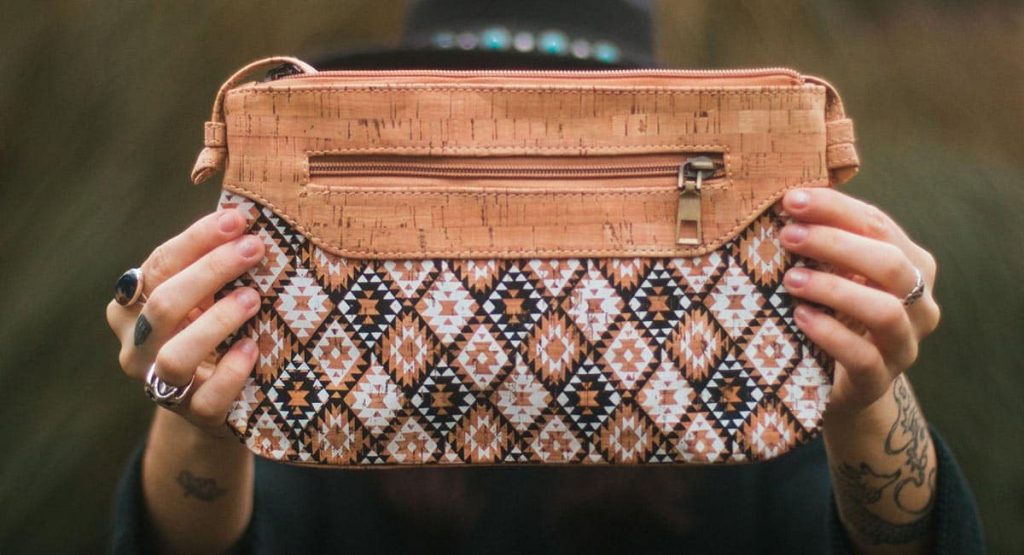
Source: Etsy / LifeLessOrdinaryCo
Cork leather is a highly versatile, flexible fabric made from cork shavings with appropriate backing materials. It is a good eco-friendly choice for handbags, wallets, and purses.
One further reason to choose cork is that in doing so you are helping to ensure that cork oak forests remain and even expand, helping to protect against desertification and supporting biodiversity.
In short, choosing cork over leather is a sound, environmentally-friendly decision.
Recycled rubber
Durable, easy to care for, and weatherproof, recycled rubber has a lot going for it. It can also be styled to imitate the exact look of fine grain leather, with no animals involved. As most rubber is created with valuable virgin materials, giving it a second life is an excellent way to reduce pollution.

Source: Nukak
Aside from creating fashion accessories, recycled rubber is also an excellent material for sneakers and footwear in general. Manufactured to withstand harsh conditions, recycled rubber is also a great leather alternative for long lasting travel bags and indestructible accessories.
Leaf leather
Made from large leaves, leaf leather is rapidly growing in popularity, not least of all thanks to its beautiful natural look. Each leaf leather book cover, wallet, or handbag is an individual unique item that displays the form and texture of the leaves used.

Source: Etsy / FoxDenSupplyCo
Lightweight and highly weather-resistant, leaf leather is also extremely durable and completely sustainable. Teak, banana, or palm leaves are often used.
Leaf leather can also create an important source of revenue for small community artisans, as well as making use of an often unutilized, abundant natural resource.
Flexible and soft, leaf leather can be used to create a wide variety of items, including home textiles, as well as clothing, footwear, and accessories. Leaf leather also has the distinct advantage of being biodegradable, making it a good choice for the eco conscious.
MuSkin
Made entirely from the cap of a giant mushroom native to subtropical forests, MuSkin is an all-natural product. Eco-friendly techniques and products are used on the collected mushroom material to transform it and enhance its natural beauty, without damaging the environment.
MuSkin can be worn next to your skin, making it an excellent sustainable leather alternative for clothing, including shoes and hats, as well as bags. It is breathable, and also inhibits bacterial growth.
Thanks to this, plus its high capacity to absorb moisture then slowly release it, MuSkin is currently being considered for future use in insoles and watch straps, amongst other applications.
Soft to the touch, with an almost suede-like look, MuSkin makes a beautiful looking leather alternative. As it is grown, you generally get a standard length of around 40cm x 15cm.
There is not a lot of production currently taking place; however, it is definitely one to watch in the future, especially given its smooth, matte texture, and high sustainability.
Coconut leather
Water-resistant, certified Vegan, and made from by-products of the coconut industry, coconut leather makes a great, sustainable leather alternative. Not to mention its papery, leather-like texture that gets a beautiful shiny patina with time, a far cry from any plastic leather substitute.
Malai Biocomposite consists of organic bacterial cellulose that feeds off waste coconut water. This water is collected from coconut farmers who otherwise discard it when harvesting the coconut flesh. As coconut leather is made in sheets, it can be made to order in a variety of thicknesses or molded to a specific shape.

Source: Malai Biomaterials Design
Coconut leather is a popular choice for bags and wallets, including luxury vegan handbags and purses. As it is a completely natural product, it is highly sustainable and completely biodegradable.
So much so, you can even compost it at the end of its lifespan for zero waste.
Tree bark leather
Made from a traditionally manufactured bark cloth that was once exclusively destined for monarchs, Barktex is a unique, highly prized leather alternative.
Once a year, organic Ugandan farmers harvest a layer of bark from renewable East African fig trees. Combined with a water-based resin, the resulting cloth can be used for clothing, footwear, or furniture.

Source: Barktex
Each piece is a beautifully individual, natural product. To better showcase these works of art and increase the product’s applications, a binding agent made with hemp and banana fibers can be added to the cloth for structural modeling.
This also allows Barktex to be used in architectural, automotive, and aviation industries, where its natural beauty and lightweight can be showcased in furniture or wall panels, trims, and shelves.
As the trees grow with minimal human intervention and their bark is permanently renewable – the trees continue to grow after harvest, this is one of the most sustainable leather alternatives around. It is also a high quality, attractive product that can be used in a wide variety of applications.
Agave
Vegan leather can also be made from agave or cacti plants (such as with the case of Desserto cactus leather, recently developed by two Mexican entrepreneurs). There are numerous advantages to using these types of plants to create a leather substitute.

Source: DESSERTO
Firstly, the resulting fabric is sustainable and plant-based. Secondly, as these plants grow in the desert, they require very little water, unlike most other crops used for feeding animals or to create fabrics.
After the plant fibers are collected, they can be naturally tanned using sunlight, unlike the traditional chemical and energy-intensive tanning process for rawhide leather.
Agave leather made from the Agave Cantala plant is made in a highly sustainable manner, without any irrigation or fertilizers. Sri Lankans have been hand-weaving agave plant fibers for over 300 years to create hana mats. Today, the fine cantala fibers are handwoven to create sustainable bags and fashion accessories that would normally be made from leather.
Piñatex
Made from pineapple leaf fibers, Piñatex is a great example of using a by-product to create a highly sustainable leather alternative. It is also a more ethical choice, providing families in the pineapple cultivation industry with an additional source of income from what was once discarded as waste.

Source: Wikimedia / Piñatex
A 100% animal-free leather, Piñatex is both natural and sustainable. Once the fiber has been removed from the leaves, it is made into a non-woven textile that is then finished in Spain. The finished product has good weather and scratch-resistant properties, making it a highly durable fabric.
Already popular in Portugal, where it is used to make shoes, some of the biggest names in fashion have also started working with its manufacturer Ananas Anam to create their own sustainable collections. Its durability and thick leather-like texture make Piñatex an excellent leather alternative, for bags and shoes in particular.
Bio-fabricated leather
Thanks to scientific advances, bio-fabricated leather, also known as lab-grown leather, is increasingly becoming a viable alternative to traditional leather.
Modern Meadow, based in Brooklyn, NY, utilizes recent advances in stem cell engineering in order to grow leather artificially in their laboratories, cutting out the environmentally harmful animal rearing process.
The process involves collecting skin cells from an animal, in a way that causes no harm. These skin cells are then replicated in the lab so that they produce collagen, a natural connective tissue. The mixture of cells and collagen are arranged into sheets and these sheets are then layered and left to age.
The resulting product is then tanned and becomes leather, with all of the same properties as you would expect from regular leather. The tanning process uses fewer chemicals than traditional tanning, and as it is grown in the lab, there’s no animal cruelty involved, and none of the waste, pollution, and deforestation commonly associated with animal rearing for leather.
Modern Meadow’s future projects include upscaling production, as currently only very small amounts are produced, and altering the fabric’s inherent qualities to provide clothing and furniture manufacturers with specialized leathers that are specifically suited to their exact needs.
Ultrasuede
Made by Japanese company Toray, Ultrasuede is a highly innovative fabric with the exact soft, plush feeling of suede. However, instead of being animal-based, it is made with mostly plant-based, raw materials.
While Ultrasuede does contain some polyester, it is a much more eco-friendly choice than traditional leather, containing recycled and biomass-derived polymers. Toray is constantly improving production, aiming to progress to a fully plant-based polyester, eventually.

Source: Wikimedia / Fabrizio Marco Nannini Photographer
Thanks to their recycling technology, they have already managed to reduce production times for less fossil fuel consumption and are actively pursuing their green innovation goals.
Ultrasuede is a non-woven, intertwined fabric with a huge variety of applications. From use in the fashion, homeware, and transport industries, to sports and gadget accessories, Ultrasuede is easy to maintain, lightweight, and highly durable. Since its debut in 2010, it has already made a huge impact.
Wine leather
Italian company Vegea has already got underway with a process to transform the grape leftovers from wine production, known as the marc, into a leather-like sustainable material that can be used in the fashion, automobile, and furniture industries.

Source: YouTube / LegambienteOnlus
With an estimated annual worldwide production of over 6 billion pounds of grape marc, there is an abundance available. Commonly considered a waste product, a lot of grape marc is currently incinerated.
By transforming this unwanted by-product into a high value sustainable leather alternative, Vegea have created an efficient, animal-free material with a low environmental impact.
With a look and feel that is similar to traditional animal leather, this plant leather makes an excellent alternative. It is already being produced for use within the fashion industry, with well known retailer H&M set to release an eco-friendly collection made with Vegea’s wine leather.
Nettle leather
Nettles have long fibers that create a strong material that is highly resistant and soft, with a good absorption capacity. Thanks to nettles’ natural prevalence and their high resistance to pathogens, they don’t need any herbicides, plus they can flourish with just rainwater.
While people have been making fabric from nettles for thousands of years, nettle leather is just starting to take the world by storm. It is a great alternative to most traditional leather accessories and it can already be found in footwear and bags.
Thanks to its low-impact cultivation and non-toxic, eco-friendly treatments, nettle leather is a good breathable fabric that certainly makes a great natural traditional leather replacement. If you are looking for a vegan plant-based leather, nettle leather is a tried-and-tested product that is already commercially available.
Time to switch to a sustainable leather alternative
With such excellent sustainable alternatives to leather available, there is no reason to ever buy a leather product again. Not only will you help to make a huge difference to the environment, you’ll also save precious resources, reduce pollution, and help to prevent cruelty to animals.
Love glitter on your textile items? Check out our separate blog where we debunk the biodegradable properties of glitter.
If we all embrace more sustainable products, together we can change the world.


